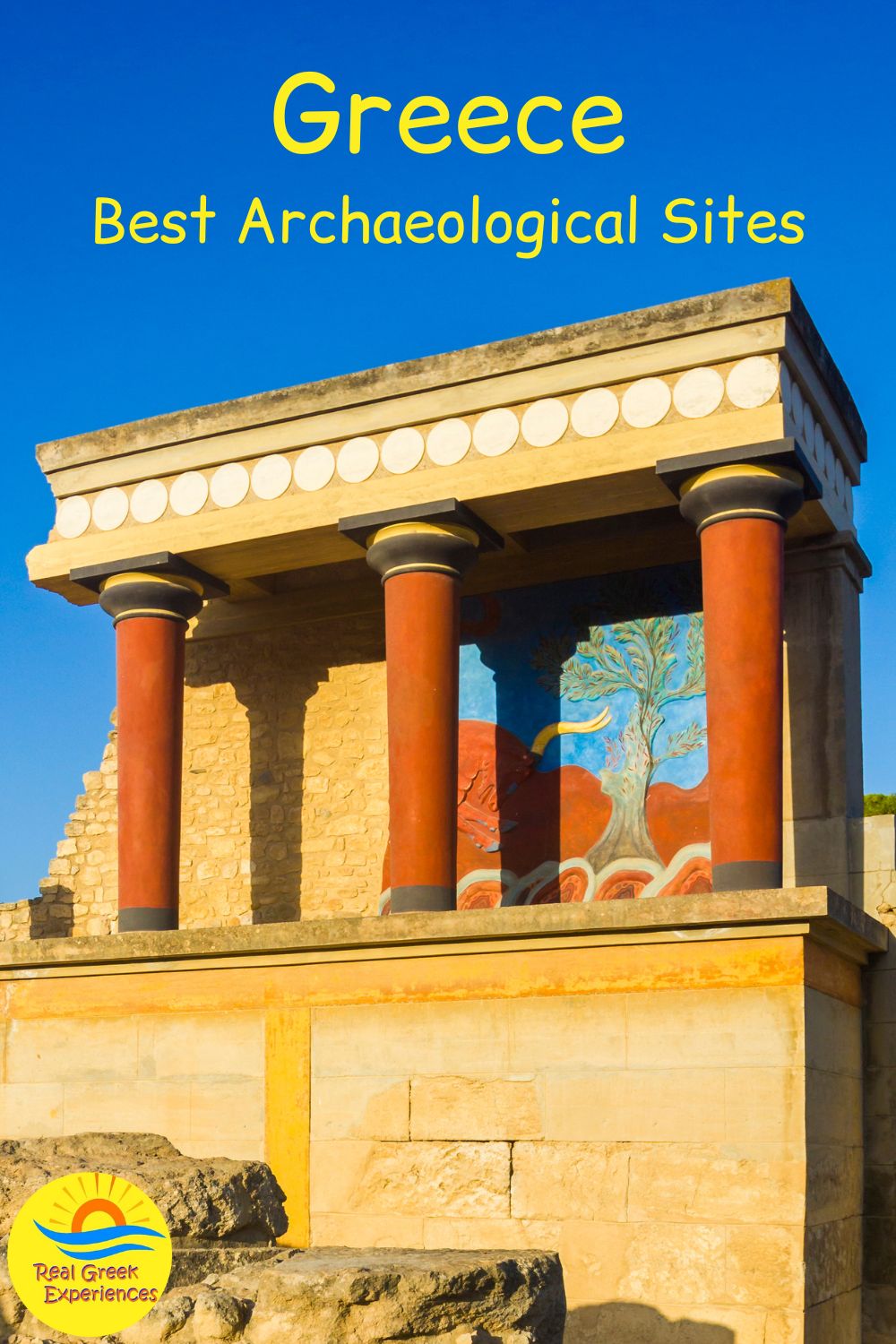A guide to the best archaeological sites in Greece. It includes the Acropolis, the Ancient Agora, Delphi, Olympia, Mycenae, Epidaurus, Ancient Delos, Ancient Akrotiri, and more!
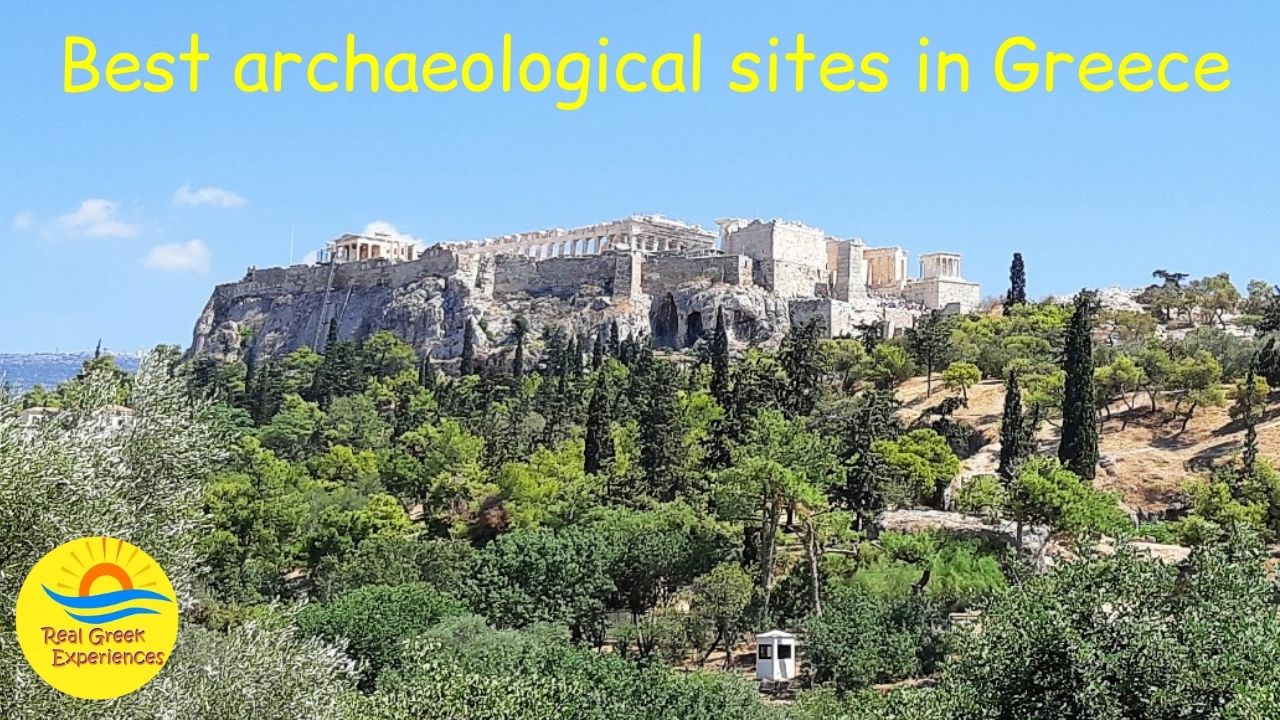
The archaeological treasures of Ancient Greece
Greece is world famous for its ancient past. Many visitors come to Greece to learn more about the ancient Greek civilization, and to admire the wonderful ancient sites.
However, choosing which archaeological sites to visit isn’t all that straightforward. There are over 500 (!) major and minor archaeological sites in Greece, many of which have on-site museums.
In this article, I’ve listed some of the most important archaeological sites in Greece. You will find out why they are so important, what you will see, where they are, and how to visit.
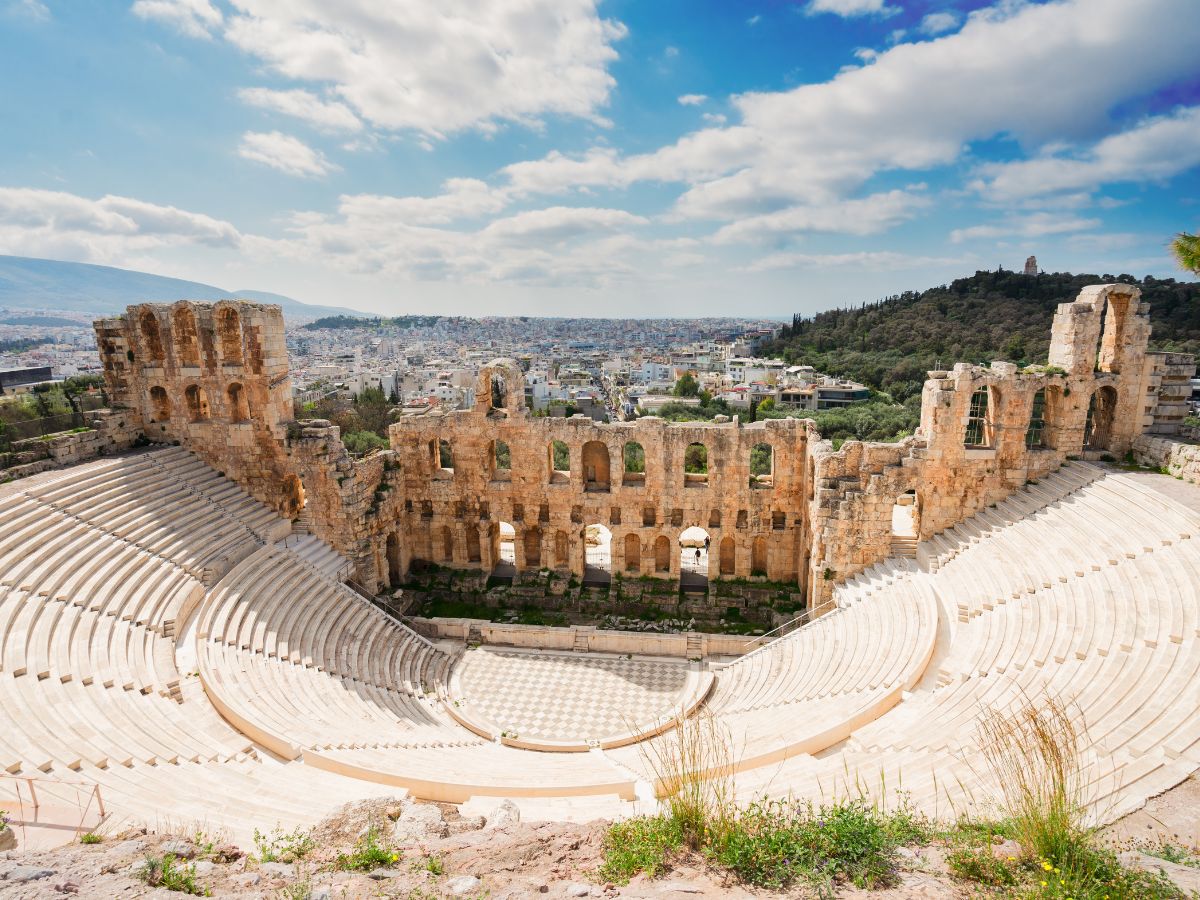
1. The Acropolis of Athens
The Acropolis of Athens is the most important archaeological site in Greece. It was built in the 5th century BC, and is a UNESCO World Heritage Site.
The word “Acropolis” means “the highest point of the city”. Indeed, the Acropolis is an ancient citadel perched on top of a hill right in the center of Athens. As such, it offers stunning views of the Greek capital, including the theatre of Dionysus and the theatre of Herodes Atticus.
In other words, the Acropolis is not just one building, but an area that contains a complex of several ancient temples, the most famous of which are the Parthenon (pictured below), the Erechtheion, and the Temple of Athena Nike. Here is a cool story explaining how Athens got its name!
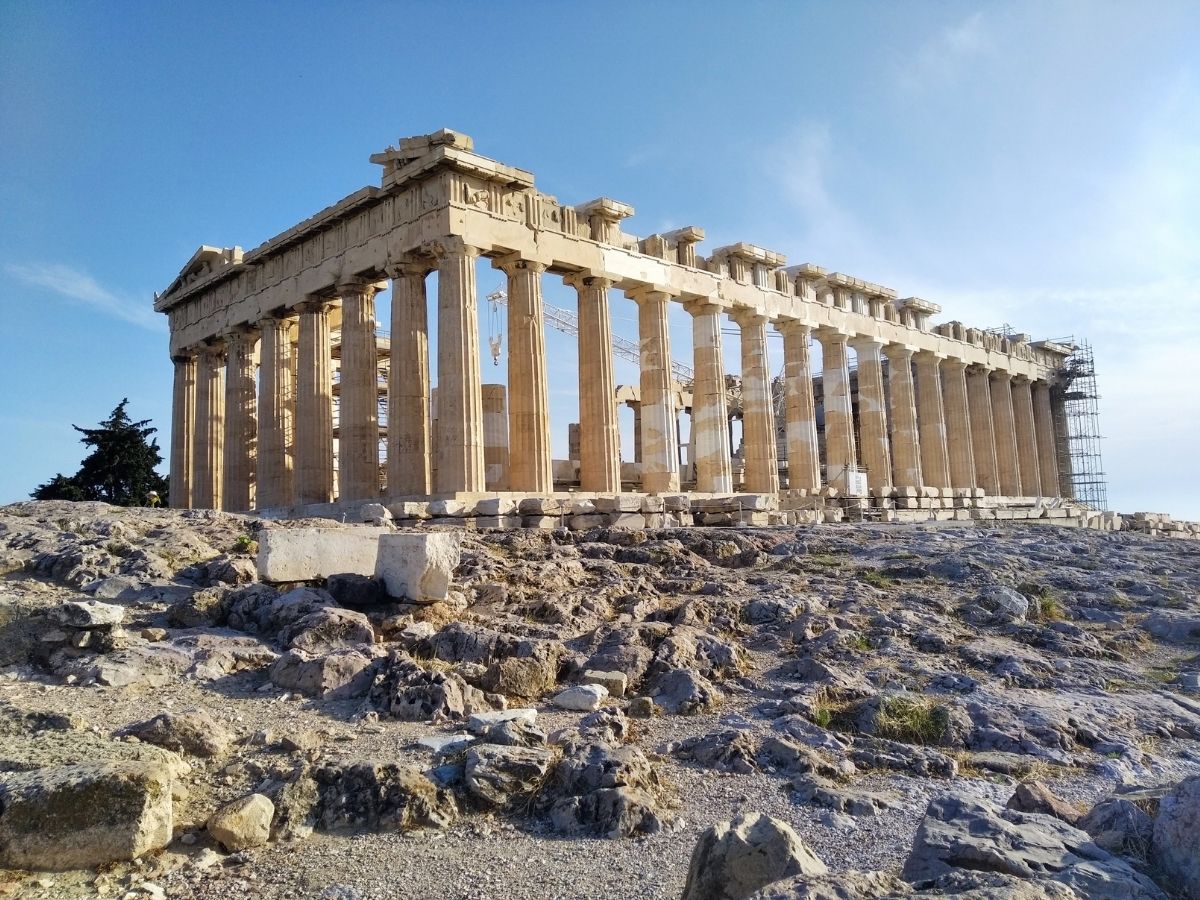
How to visit the Acropolis of Athens
A single-entry ticket to the Acropolis costs 30 euro, though some categories of people are entitled to a discount or free entrance. It’s best to book your ticket in advance on the official website, especially if you are visiting in peak season.
With that said, I recommend taking a guided tour of the Acropolis, which will help you understand more about life in Ancient Athens and the importance of the Acropolis as a religious center. You will also get to know more about the sacred ceremonies and rituals that took place on the ancient rock.
The Acropolis is open from 8:00-20:00 in summer, and 8:00-17:00 in winter. If you are visiting in summer, it’s best to avoid the hottest hours of the day. Wear non-slippery shoes, bring some water and a hat, and check out these other tips for staying cool in the summer in Athens.
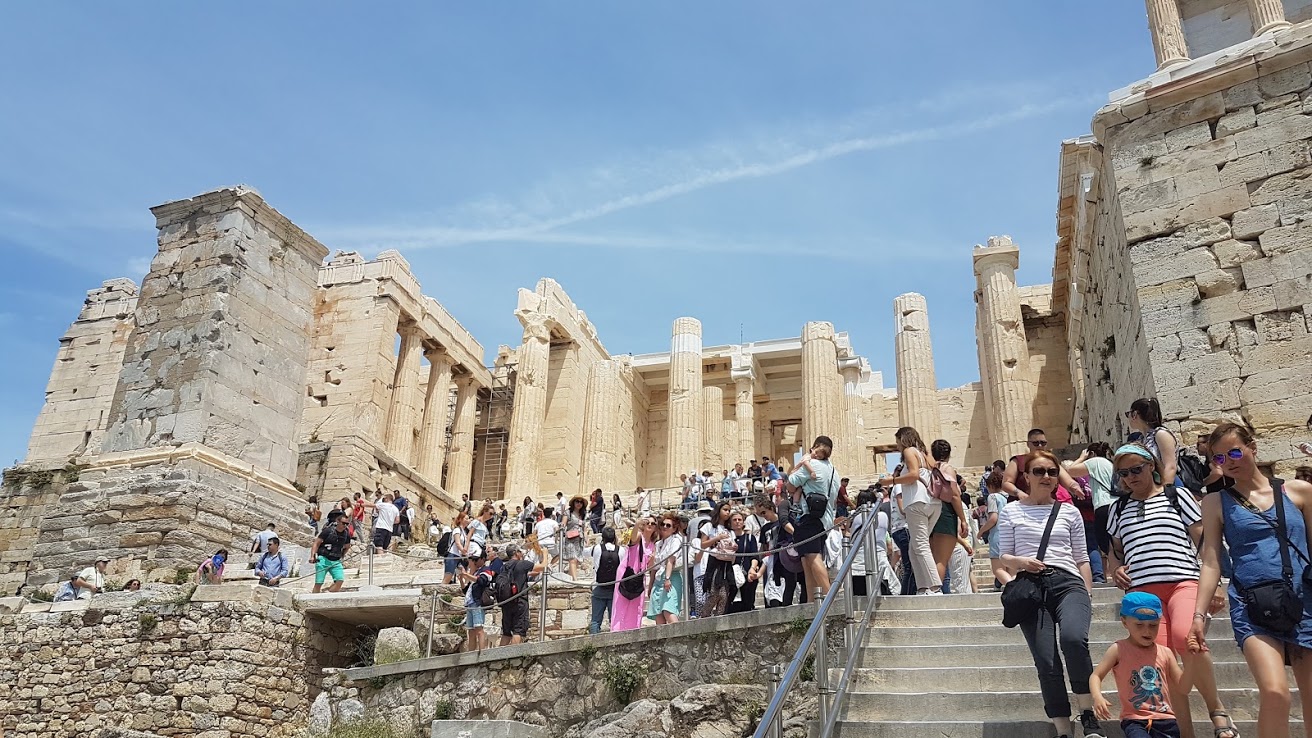
2. The Ancient Agora of Athens
The Ancient Agora of Athens was the civic, social and cultural center of ancient Athens during the classical era. It was used as a marketplace and meeting point, where Athenian citizens gathered to discuss political and social issues.
Today, the Ancient Agora is a vast green area which is full of ancient ruins and statues. The highlight is the imposing temple of Hephaestus, the best preserved ancient temple in Greece.
There is also a brilliant archaeological museum explaining aspects of life in ancient Athens, housed in the reconstructed Stoa of Attalos. Here is my full guide to the Ancient Agora of Athens.
How to visit the Ancient Agora of Athens
A full-price ticket to the Agora costs 20 euro – discounts apply.
Allow at least a couple of hours if you want to read all the information in the museum. In my opinion, this is one of the most underrated museums in Athens.
The Agora is open from 8:00-20:00 in summer, and 8:00-17:00 in winter. Have a look at the official Ancient Agora website for updated information and to book your ticket.
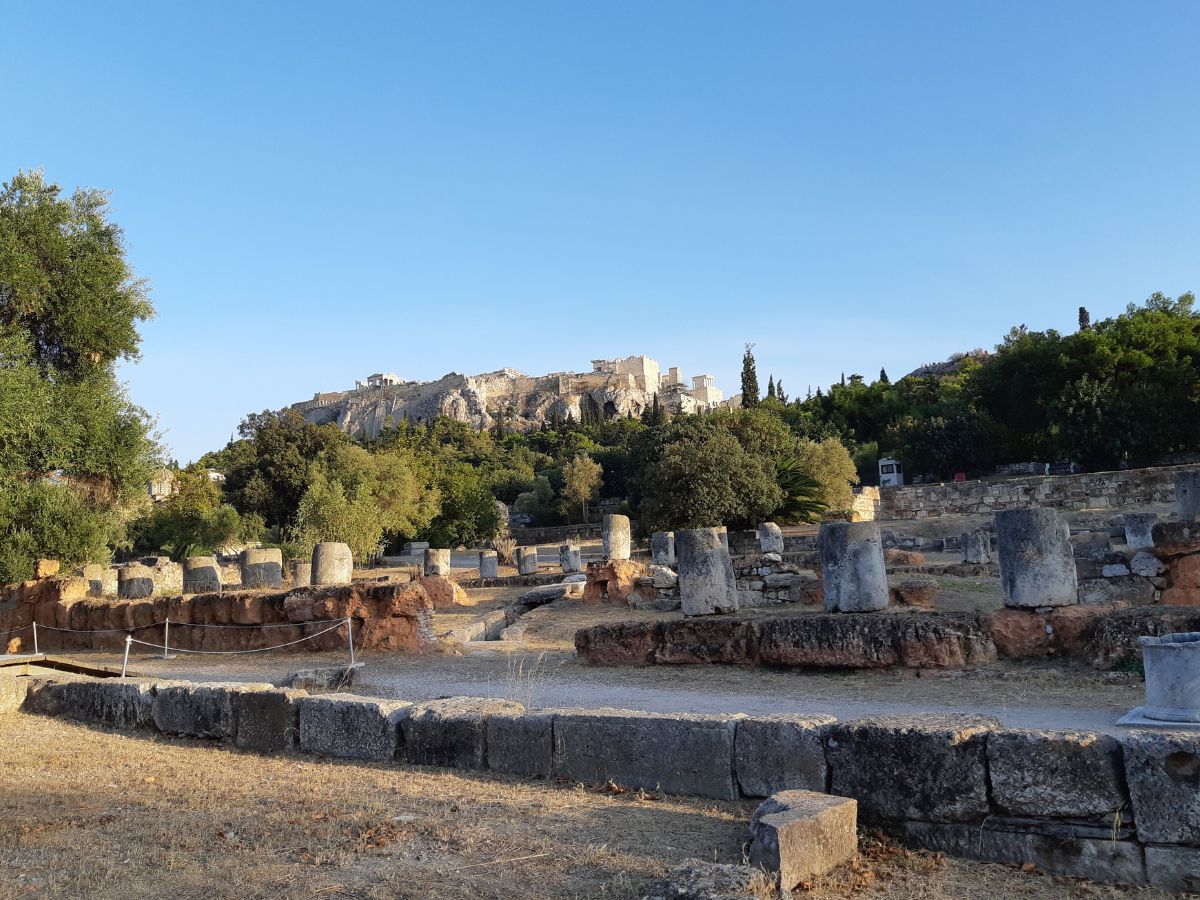
More sites in Athens
If you are a fan of archaeology, you should definitely aim to spend a few days in Athens.
Apart from the world-famous Acropolis and the Ancient Agora, there are five more archaeological sites in central Athens: the Temple of Zeus, Kerameikos Ancient Cemetery, the Roman Agora, Hadrian’s library and the Archaeological site of the Lyceum of Aristotle.
Or, if you prefer to visit Ancient Athens for free, you can follow my free Ancient Athens walking route, and walk around the various hills that offer spectacular views of the Greek capital.
3. The Temple of Poseidon at Sounion
One of the most photographed ancient Greek temples is the temple of Poseidon, which was built in the 5th century BC. It is located at Cape Sounion, about 70 kms out of central Athens, and stands majestically on a rocky hilltop, offering stunning views of the Aegean Sea.
The area of Sounion, which lies at the southernmost point of the Attica peninsula, was a key point for Ancient Athens. Its strategic location made it an ideal point to monitor ships sailing through the Saronic Gulf. In addition, it was close to the Ancient Lavrion silver mines, an important source of income for the Athenian state.
Here is my full guide to the majestic temple of Poseidon.
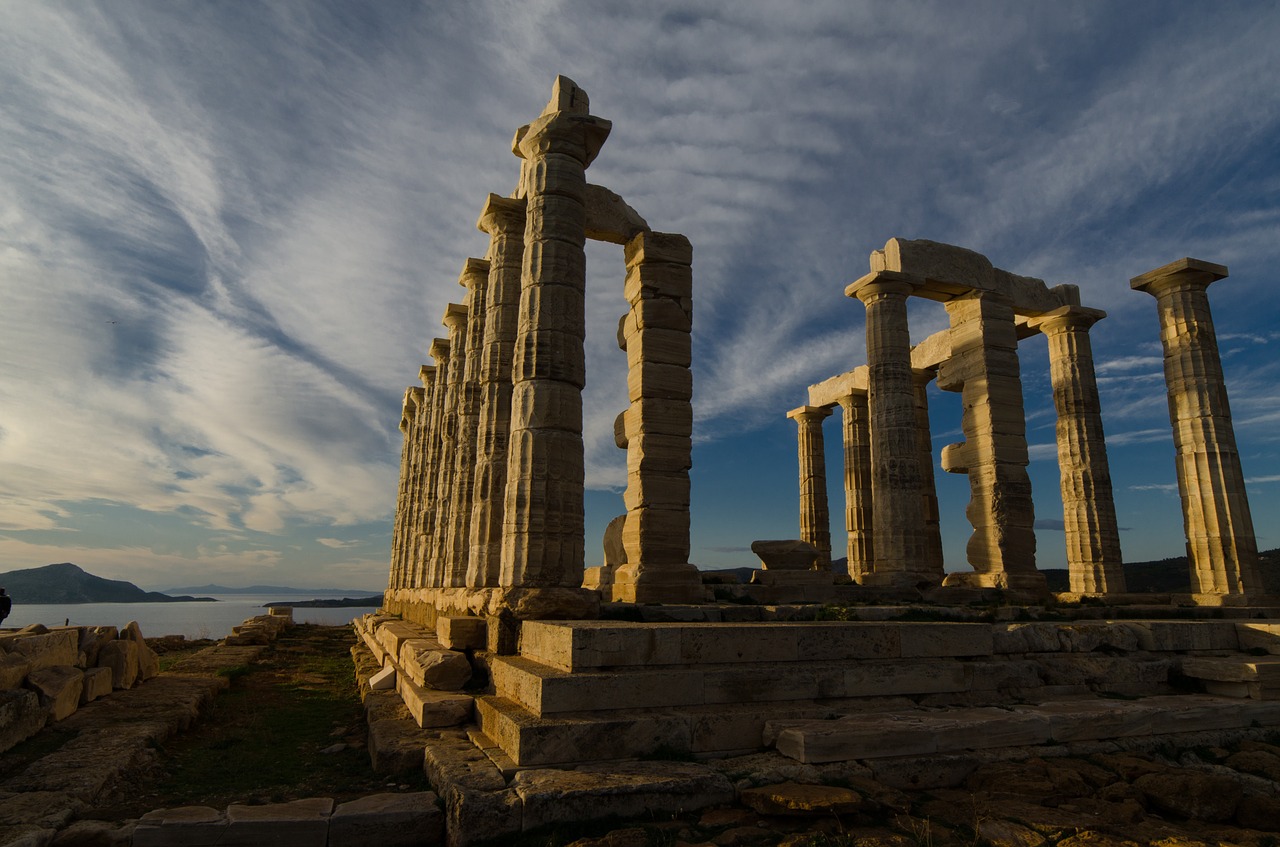
How to visit the Temple of Poseidon
The easiest way to visit the Temple of Poseidon is on a half-day tour from Athens. Alternatively, you can also rent a car and drive there yourself. Relying on public buses can be tricky, especially if you are on a tight schedule.
The sunsets here are spectacular. I recommend arriving an hour or two before sunset, and spending some time just looking at the Aegean Sea!
For more information on opening hours and tickets, check the official Temple of Poseidon website. Tickets are only available once you’ve arrived at the site.
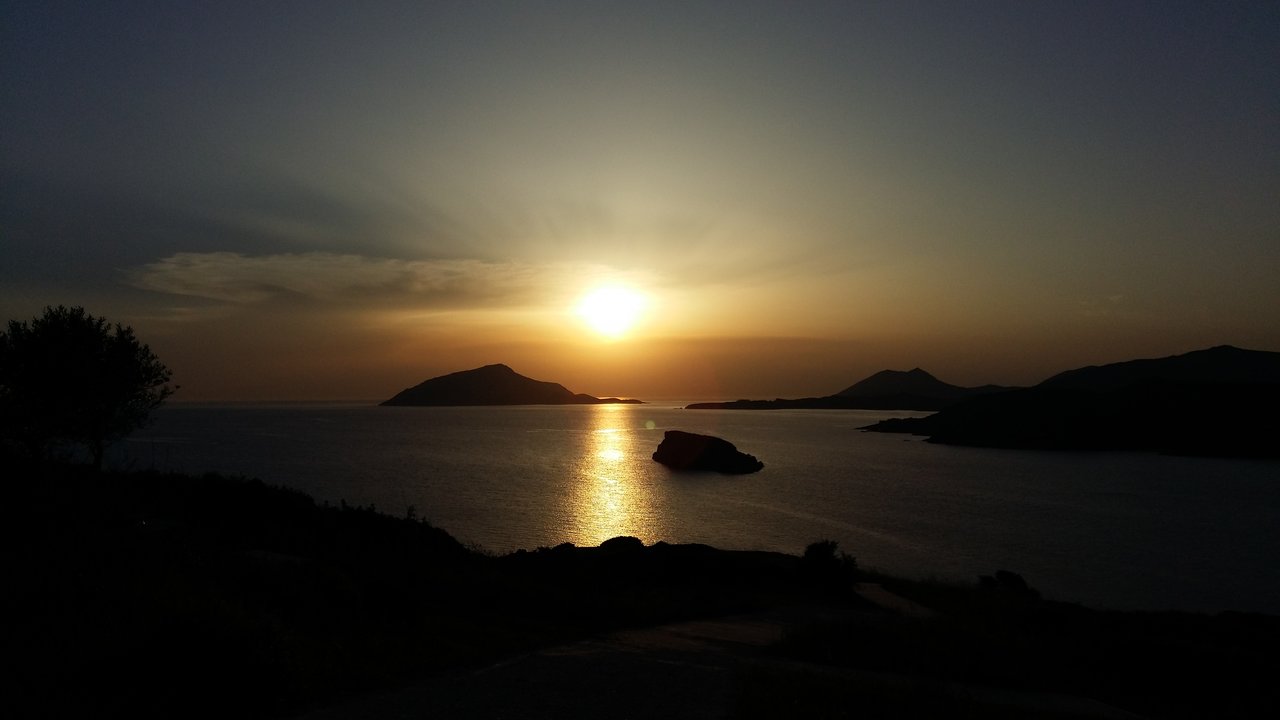
4. Archaeological Site and Museum of Ancient Delphi
Ancient Delphi is another UNESCO World Heritage Site in Greece. It is located in the area of Fokida in mainland Greece, on the side of mount Parnassus, roughly a three-hour trip out of Athens.
Originally, the Sanctuary of Delphi was a place of worship of Mother Earth. Later, it became a cult place for God Apollo, and home to the Oracle of Delphi and the priestess Pythia. Its importance was so great, that it was considered to be the centre of the ancient world.
Today, you can see the remains of various ancient buildings, most notably the temples of Apollo and Athena. There are many more ancient relics, such as the remains of an ancient theatre and a large stadium at the top of the hill. The landscape is truly majestic, and adds to the special energy of the site.
Here is my guide to Ancient Delphi. Also, have a look at this article about the inspirational Delphic Maxims, which were found inscribed all around the site.
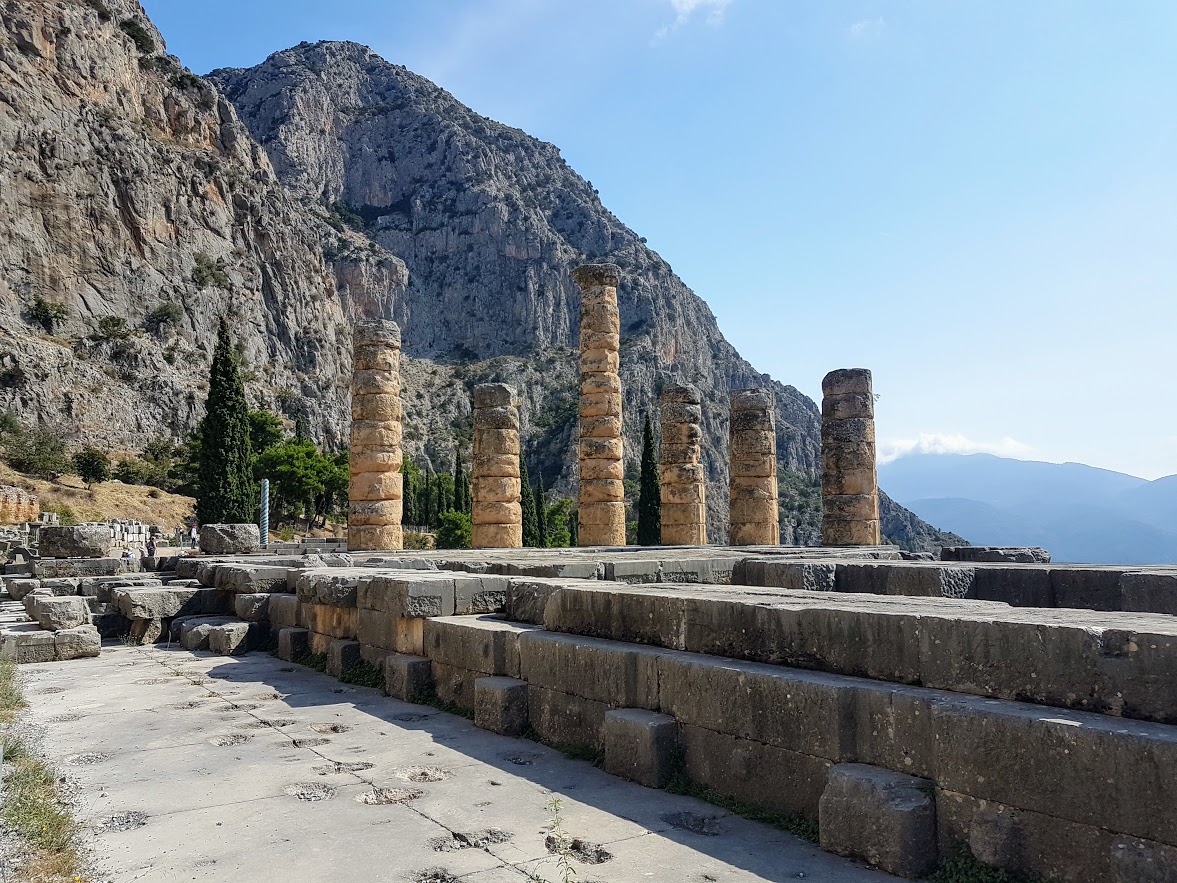
How to visit Ancient Delphi
You can visit Ancient Delphi and the superb museum on a day trip from Athens. You can either take a public bus, hire a car, or take an organized guided tour from Athens.
In summer, the site is open from 8:00 to 20:00. Check the official website for more details on opening hours, admission prices, days with free entrance etc. If you decide to visit independently, allow at least three to four hours for your visit.
Tip: Do not skip the ancient stadium! It’s located at the highest point of the site, and it’s totally worth the climb, as it offers the best views of Mt Parnassus and the wider area of Delphi.
5. Ancient site and museum of Mycenae
Ancient Mycenae is one of the top archaeological sites in Greece. It is located in the region of the Peloponnese, about two hours south-west of Athens.
This is the area where a powerful ancient Greek civilization, known as the Mycenaean civilization, emerged during the Bronze Age, in the early 2nd millennium BC. This culture reached its peak between 1,350 and 1,200 BC.
The citadel of Ancient Mycenae was enclosed within thick fortified walls. The settlement behind these walls, consisted of several buildings, including the Mycenaean King’s palace and the outstanding Mycenaean tombs.
The entrance to the settement, which is the landmark of Ancient Mycenae, is known as the Lion Gate. It dates from 1,250 BC, almost a millennium before the Acropolis of Athens was built!
For more information, have a look at my guide to Ancient Mycenae and the Treasure of Atreus.
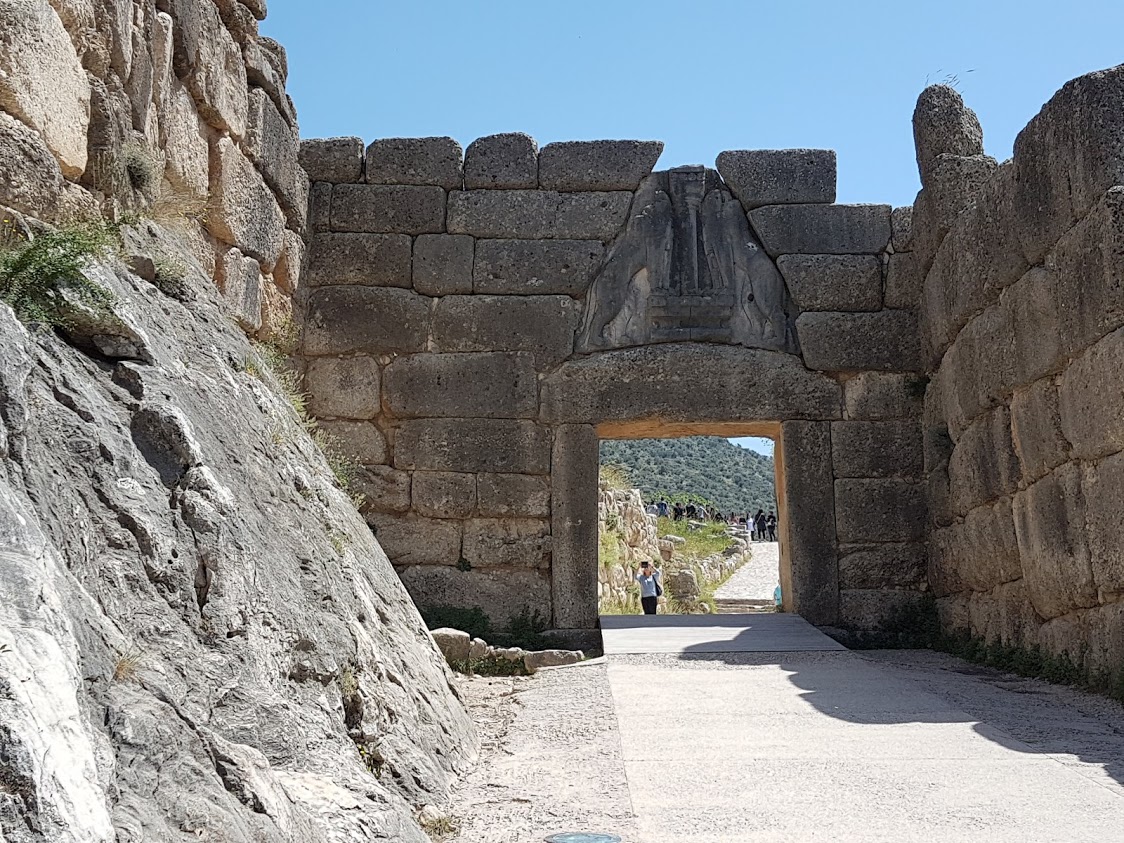
How to visit Ancient Mycenae
You can easily visit Ancient Mycenae on a day trip from Athens. You can use the public buses, but hiring a car is probably easier as you will have more freedom.
Many people prefer to visit Ancient Mycenae on an organized tour which also includes the ancient site of Epidaurus and the historic town of Nafplion. This is a great idea as you can see three of the highlights of the Peloponnese in just one day.
If you visit independently, check the official Ancient Mycenae website for more information on opening hours and admission tickets.
6. Ancient site and theatre of Epidaurus
Ancient Epidaurus is one of the most important ancient sites in Greece, and one of my own favourites. It is located two hours away from Athens, and just a half-hour’s drive from Ancient Mycenae.
The site is best known for the theatre of Epidaurus, with its incredible acoustics. However, it was a lot more than this. It was an important religious sanctuary, dedicated to the Greek god of medicine and healing, Asclepius / Asklepios.
The sanctuary was known as Asklepieion, a healing centre where people came to be treated by the powerful god. The Theatre was built in order to accommodate musical performances, which were held to honour Asklepios.
Here is my guide to Ancient Epidaurus.
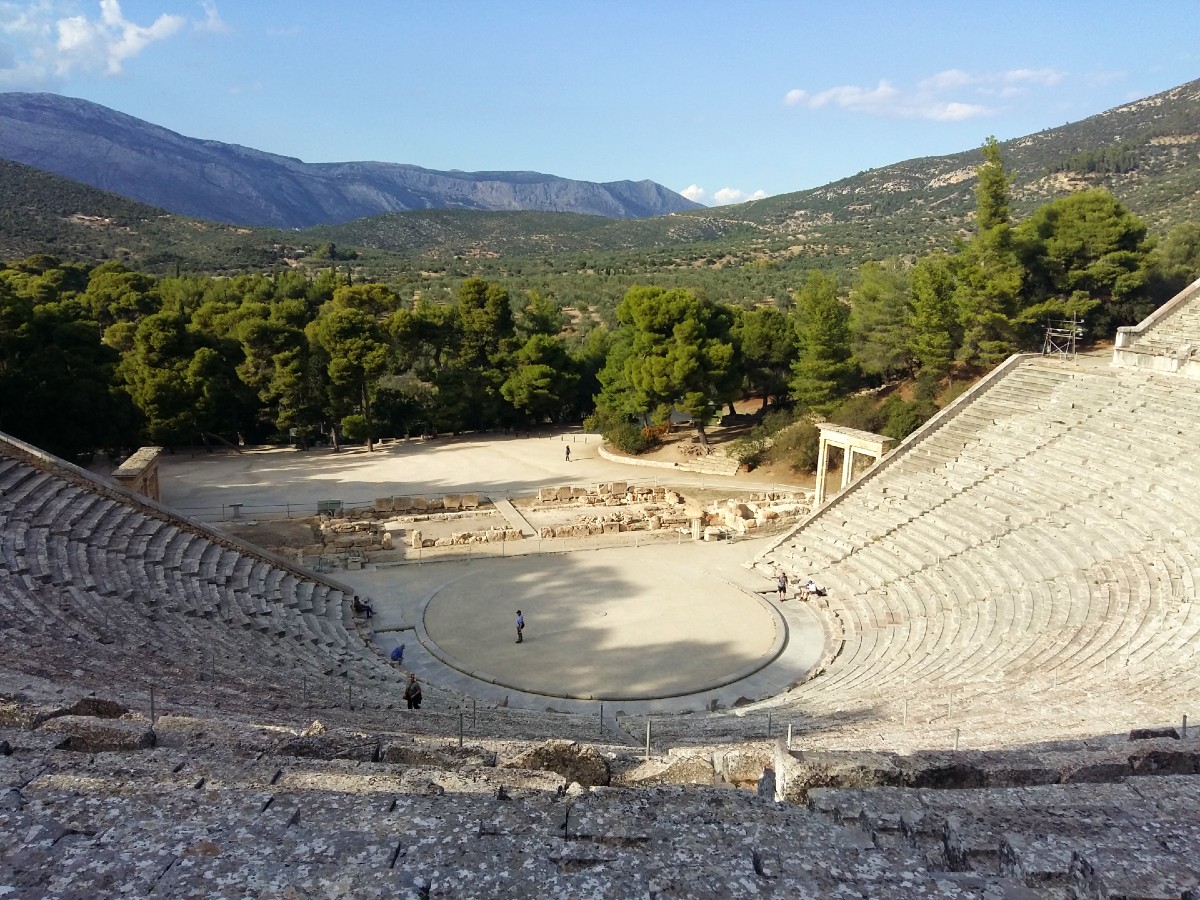
How to visit Ancient Epidaurus
The easiest way to visit Ancient Epidaurus is to take an organized day trip from Athens. You can also visit on your own, either by rental car or on the public buses.
You should know that the ancient theater is also used for performances every summer. Seeing a show at the grounds of the ancient sanctuary is a fantastic experience, and you should absolutely go for it if you get the chance.
For more information on visits, opening hours etc, check out the official Ancient Epidaurus website.
7. Archaeological site and museum of Olympia
Ancient Olympia is another UNESCO World Heritage site in Greece. It’s located in the western Peloponnese, just under 4 hours away from Athens.
This sacred site has been associated with the Ancient Olympic Games since 776 BC, when they were established. They took place to honour Zeus, the King of the Gods, and they were the most important celebration in Ancient Greece.
Many of the temples and other buildings in Olympia have not survived – but the excellent museums make up for it. Here are my guides to Ancient Olympia in Greece and the origins of the Olympic Games.
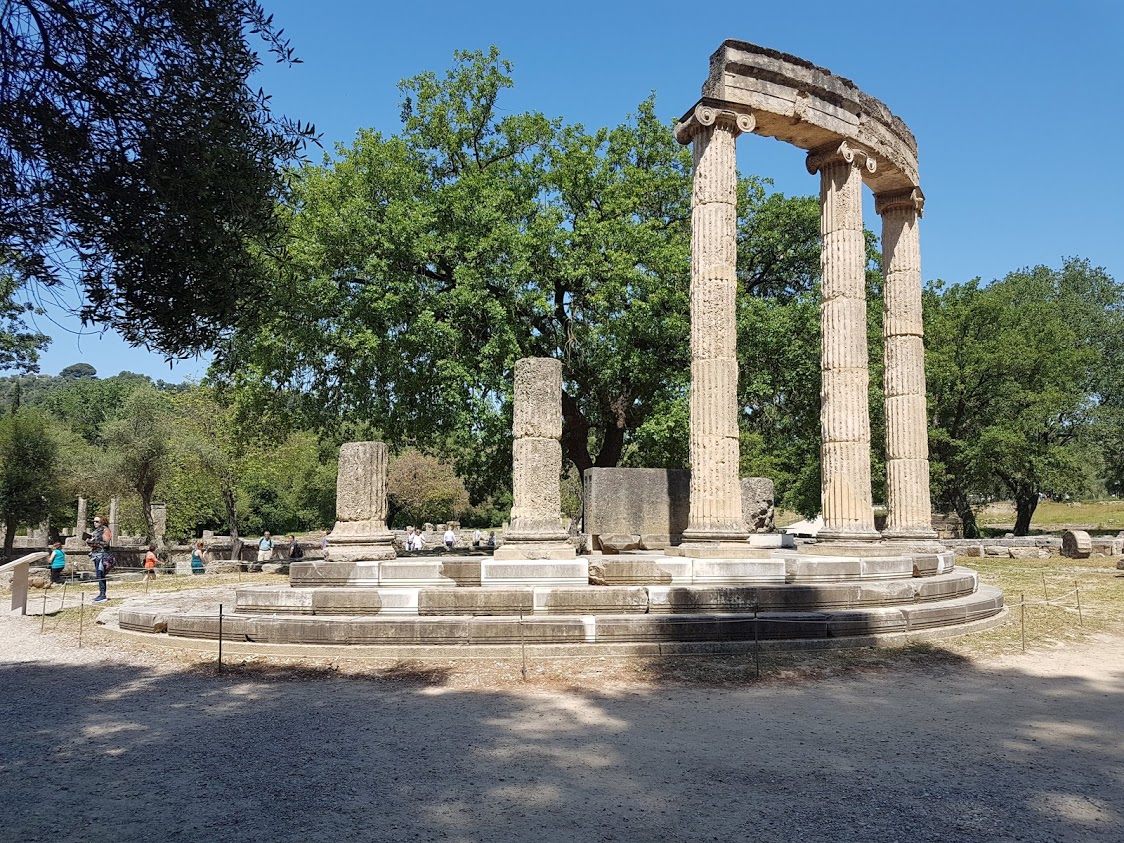
How to visit Ancient Olympia
It is possible to visit ancient Olympia on a day trip from Athens, though it will be a rather long day. Before you plan your visit, check the official Ancient Olympia website for opening hours and other information.
My suggestion is to hire a car and go on a mini road trip. There are tons of places worth visiting in the Peloponnese, including the coastal towns of Nafplio, Gythio and Kalamata. You will also find plenty of beach towns and resorts where you could spend a few days.
Other sites in the Peloponnese
Peloponnese is probably the area with the most archaeological and historical sites in Greece. Apart from ancient history, Peloponnese has lots to offer – Byzantine settlements, lovely beaches and dramatic landscapes. Here are some important sites, some of which also have a museum:
- UNESCO World Heritage Site of Mystras – also, have a look at my article about the amazing Euphoria Retreat nearby
- Ancient Messene
- Ancient Corinth
- Archaeological Site of Nemea and Nemea Stadium
- Temple of Apollo Epikourios
- Castle of Pylos
- Palace of Nestor
- Castle of Kalamata
- Castle of Methoni
- Rio Fortress
I strongly recommend renting a car and driving around the Peloponnese, in order to visit as many sites as you can!
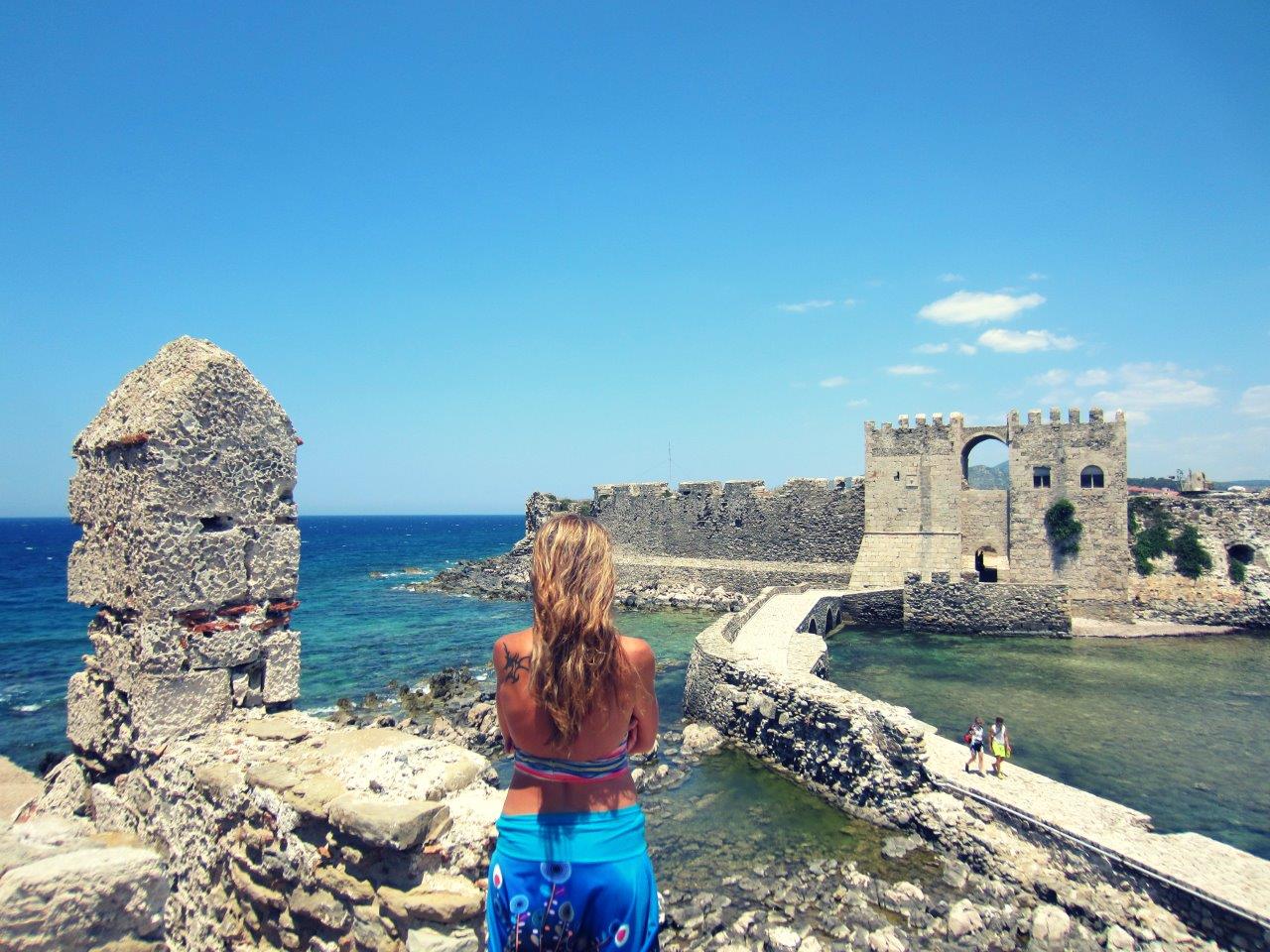
8. The Acropolis of Lindos in Rhodes
The Acropolis of Lindos is an imposing ancient citadel, located on the east coast of Rhodes, in the Dodecanese group of islands. It is one of the most visited ancient sites in Greece.
Lindos town dates back to the 11th century BC. In the 9th century BC, a temple was built to honor the patron goddess, Athena Lindia. Later, the site was taken over by numerous invaders, including the Knights of St. John, who also built the monumental palace in Rhodes Town.
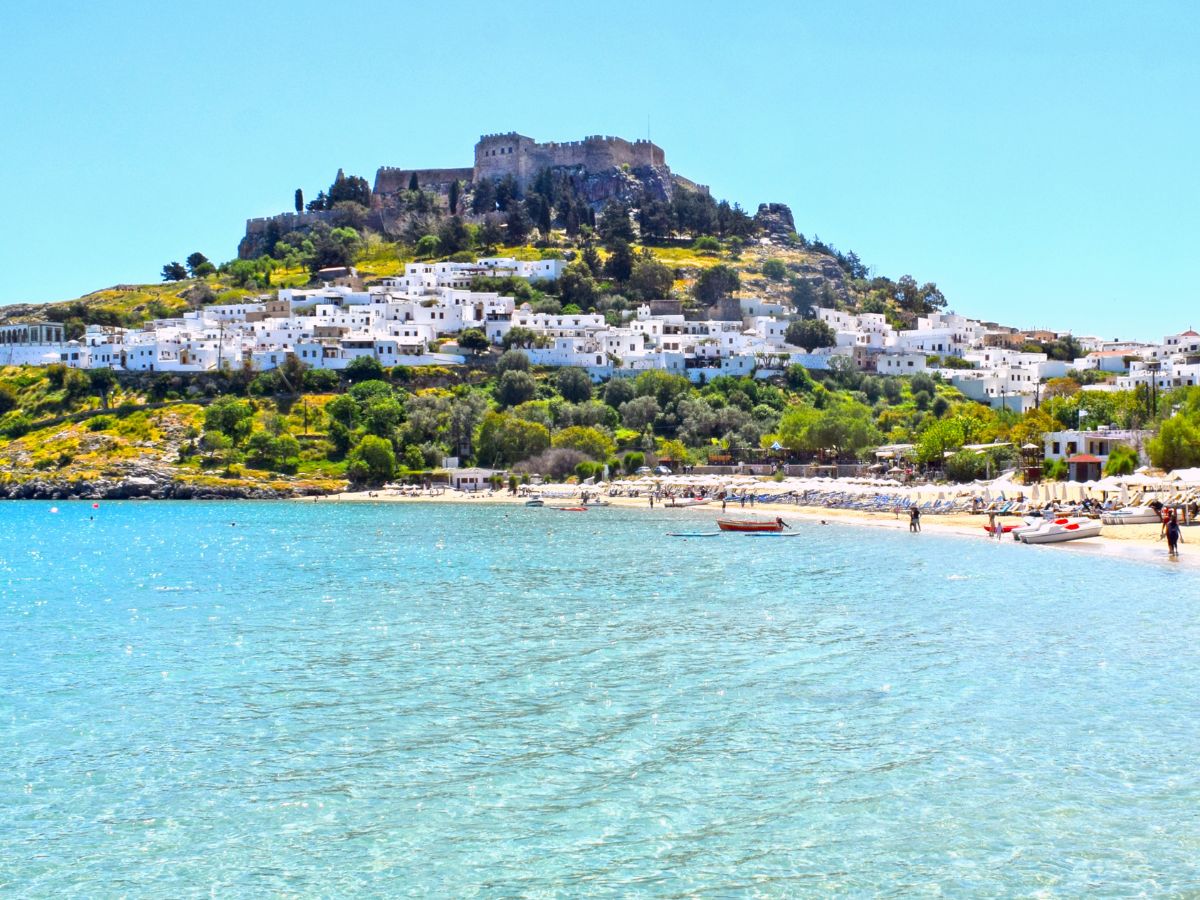
Today, visitors can see what has remained of the temple of Athena, and the ruins of the city walls that were built around the citadel. There are also some byzantine churches and an ancient theatre. Lindos town, at the foot of the hill, is a quaint little town that is worth exploring for a couple of hours.
How to get to Lindos
You can easily get to Lindos from Rhodes town by bus, taxi or rental car. There are also all sorts of organized bus tours.
Or you could even opt for a boat trip from Rhodes Town to Lindos and travel in style!
Have a look at this detailed guide on how to get around Rhodes.
It’s important to know that Lindos is a citadel, and is on top of a hill. To reach the top, you have to climb a few flights of stairs going through the quaint Lindos town. Some people prefer to ride a donkey to the top, but please refrain from doing that.
For some more information, have a look at the official website: Acropolis of Lindos.
More ancient and historical sites in Rhodes
While Ancient Lindos is very popular, the main attraction in Rhodes island is the medieval city of Rhodes, a UNESCO World Heritage Site. There are many more archaeological sites on the island that are worth visiting:
- Palace of the Grand Master
- Acropolis of Rhodes
- Acropolis of Ialyssos
- Archaeological site of Filerimos
- Archaeological Site of Kamiros
Just make sure you leave some free time to visit some of the lovely beaches in Rhodes!
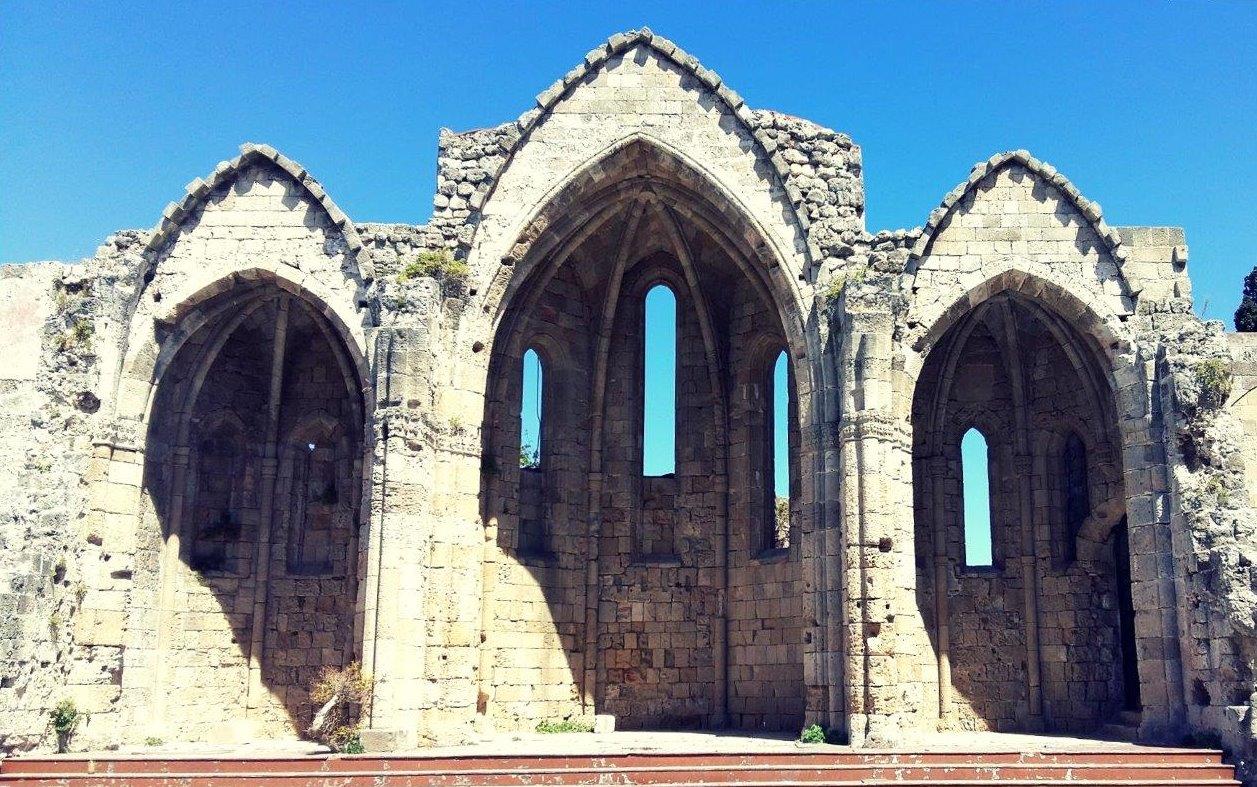
9. Ancient Delos Archaeological Site and Museum
Ancient Delos is an magnificent UNESCO site which covers a whole island. It is located very close to the famous Mykonos, in the Cyclades.
According to Greek mythology, two of the Olympian Gods, Apollo and his twin sister Artemis, were born on Delos. As a result, the island was of major religious and spiritual significance to the Ancient Greeks, who came from far and wide to pay their tributes.
In the 2nd century BC, Delos was declared a free port. Soon, it became the world’s most important commercial hub. Traders, merchants and bankers moved there from faraway lands, and the island became very multicultural.
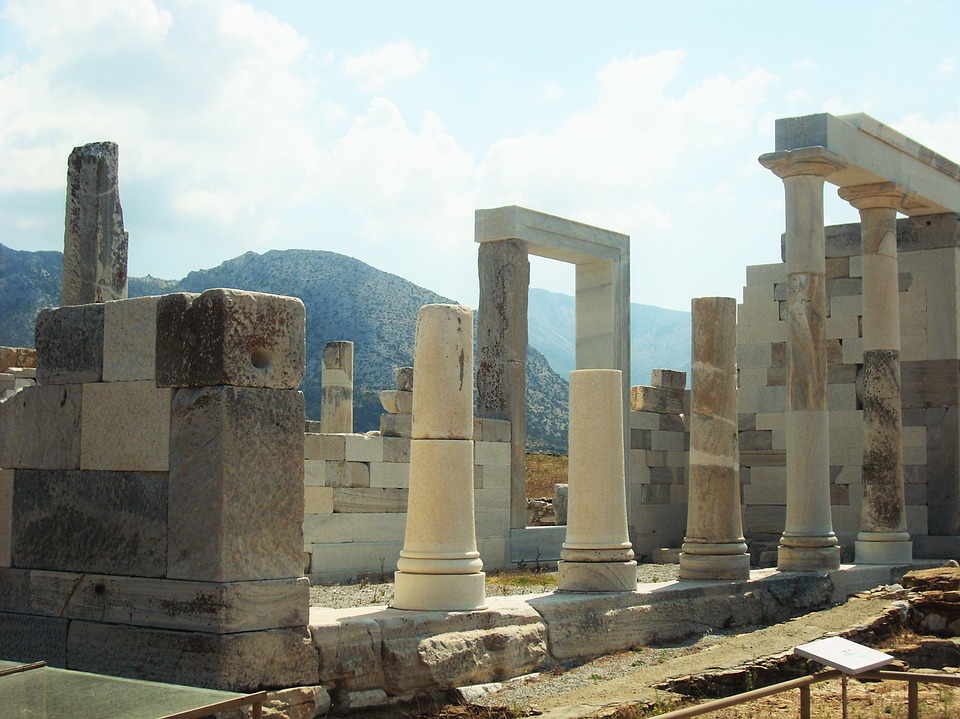
Even though the official language was Greek, there was no official religion, as people coming from other cultures were free to worship their own gods. Sadly, the golden days of Delos didn’t last long, as it was attacked twice by foreign enemies only a century later, and was subsequently abandoned.
Here’s a longer guide about Ancient Delos. In my opinion, it’s one of the most interesting archaeological sites in Greece.
How to visit Ancient Delos
Today, you can visit Ancient Delos on a little boat, as a half-day trip from Mykonos. As this is a popular site, it’s best to pre-book a guided tour, which includes the boat tickets from Mykonos to Delos and back.
There are also some sailing tours from Mykonos that also include a stop at Rhenia, another deserted island.
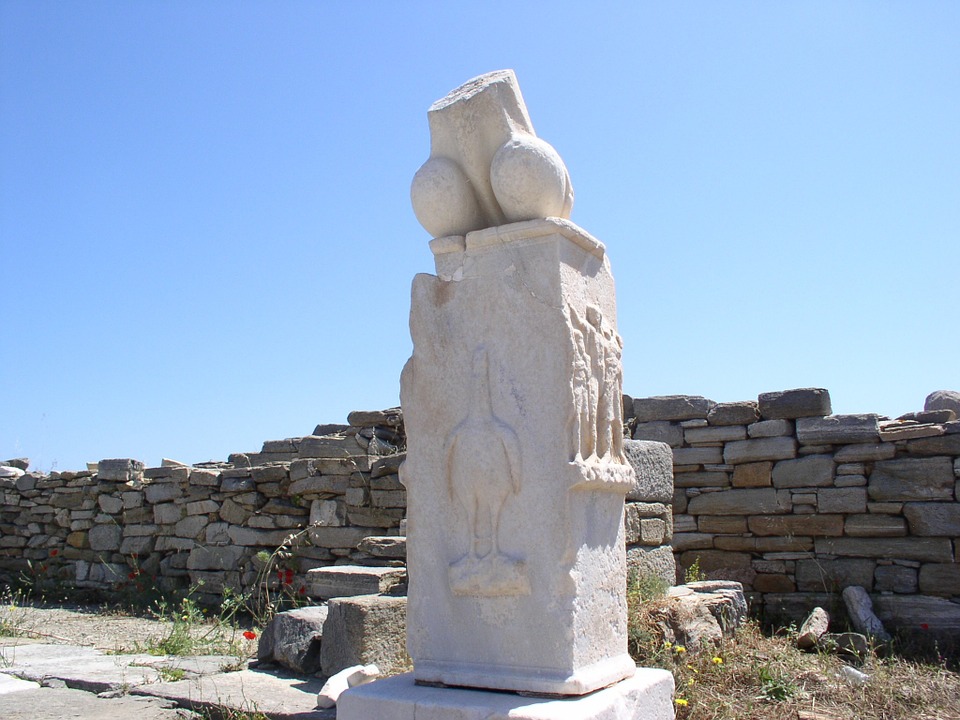
Note that the island is closed over the winter period, so you can only visit from April to October. Unless you are one of the few archaeologists who work there, overnight stays are strictly prohibited. You can find more information about opening hours etc on the official website.
Related guide: Where is Mykonos
10. The Archaeological site of Akrotiri in Santorini
Ancient Akrotiri is located on the famous island of Santorini, in the Cyclades islands. It is a prehistoric settlement dating from the 4th millennium BC, and was once one of the most important ports in the Aegean.
Unfortunately, a series of earthquakes and a volcano eruption in the 17th century BC, brought the sudden end of the ancient settlement. This might be what inspired the legend of the Ancient Atlantis!
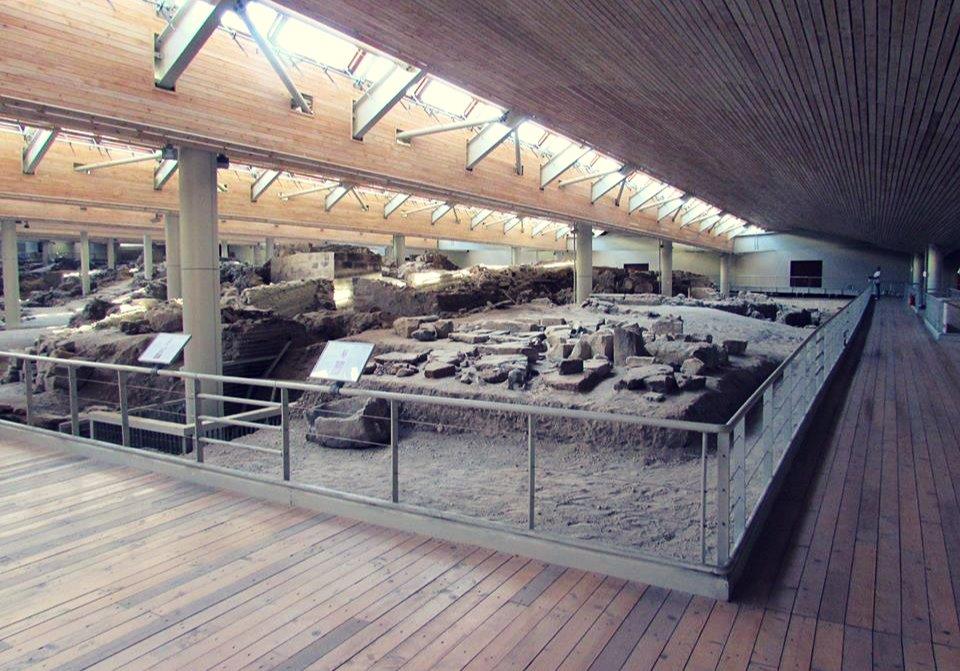
Miraculously, many buildings, tools and artefacts survived under the lava and the ashes, and have helped archaeologists understand the level of development of the ancient civilization.
How to visit the Ancient city of Akrotiri
You can easily visit Akrotiri on your own, either by public bus or your own transportation. Or, if you want to find out more about this iconic archaeological site, you can take a guided tour of Akrotiri.
Tip: You’ll be happy to know that a roof canopy fully protects the ancient site, so you won’t have to deal with the scorching summer sun!
Check the official website for more information and opening hours.
11. The Catacombs in Milos
If you visit the beautiful island of Milos, make sure you visit the Catacombs. They are the biggest known catacombs in Greece, with a length of 184 meters.
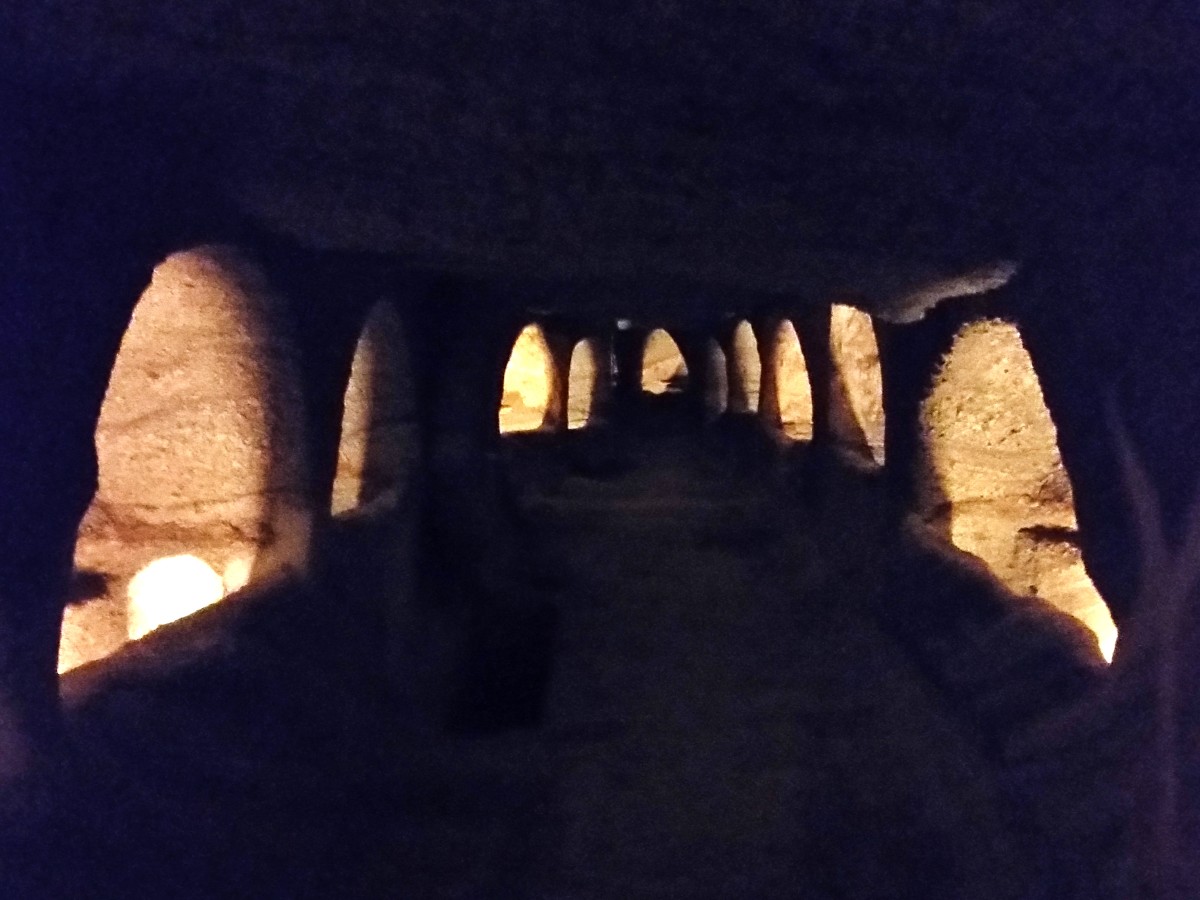
The Milos catacombs were built in the 1st century AD, in order to be used as a Christian cemetery. They were abandoned in the 5th-6th century AD, due to earthquakes and landslides. Around 8,000 Christians are estimated to have been buried here.
How to visit the Milos Catacombs
The Milos Catacombs are located close to Plaka, the main town of the island. You can get there on the public bus, or your own rental vehicle.
You can only enter the catacombs with a site guide, and you will have roughly 15 minutes inside the site itself. For more information, check the official website.
12. The Minoan Palace of Knossos in Crete
The Palace of Knossos is the best known archaeological site in Crete. It is located close to Heraklion, the biggest city in Crete.
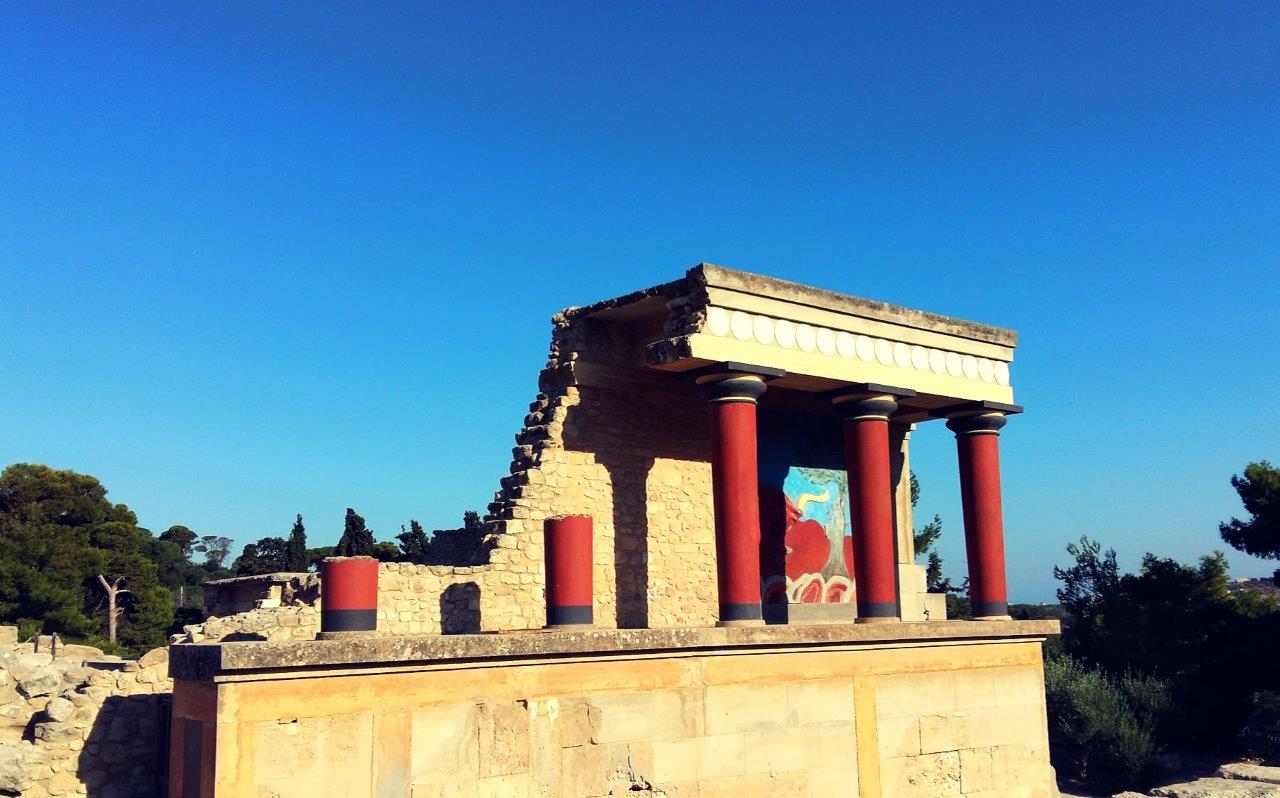
The area of Knossos was continuously inhabited from around 7,000 BC to the 5th century AD. It reached its peak during the times of the Minoan civilization which developed in Crete from 2,000 to 1,500 BC. The town became an important and wealthy commerce centre.
The Knossos Palace is said to be the palace of the legendary King Minos. It was first built around 1,900 BC, but was later destroyed and rebuilt a couple of times. Apart from the famous palaces, the site was also home to rich tombs, several workshops and several other buildings.
The site was excavated and extensively reconstructed in the 20th century. The items that were excavated, including the exquisite frescoes, figurines, other artwork and everyday items, are on display in the excellent Heraklion Museum.
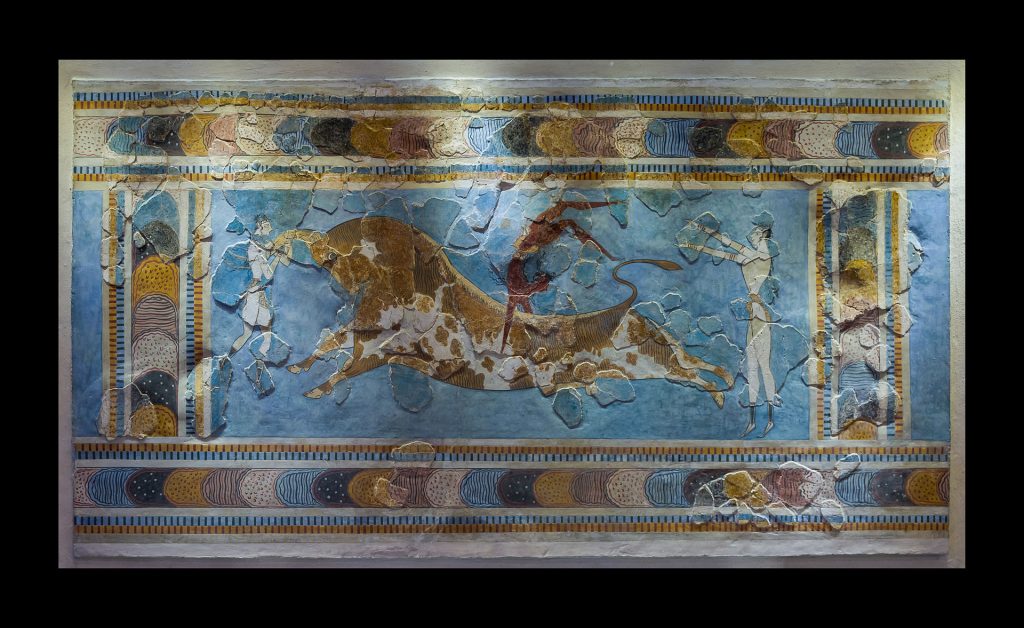
How to visit the Palace of Knossos
The Palace of Knossos is a short bus ride / taxi ride from the city of Heraklion, or you can drive there in a rental car. Guided tours are also available.
Opening hours in summer are 8:00-20:00. To avoid some of the crowds, try to visit first thing in the morning, or in the evening. Visit the official site for more information.
Tip: Crete is one of the hottest Greek islands to visit in October. As Knossos is really popular, October is a great month to go, as there will be fewer visitors.
13. Archaeological site of Phaistos in Crete
While many visitors go to Knossos, not as many make it all the way to Phaistos in south Crete. I find this site amazing for many reasons, which includes the incredible views of the Cretan landscape!
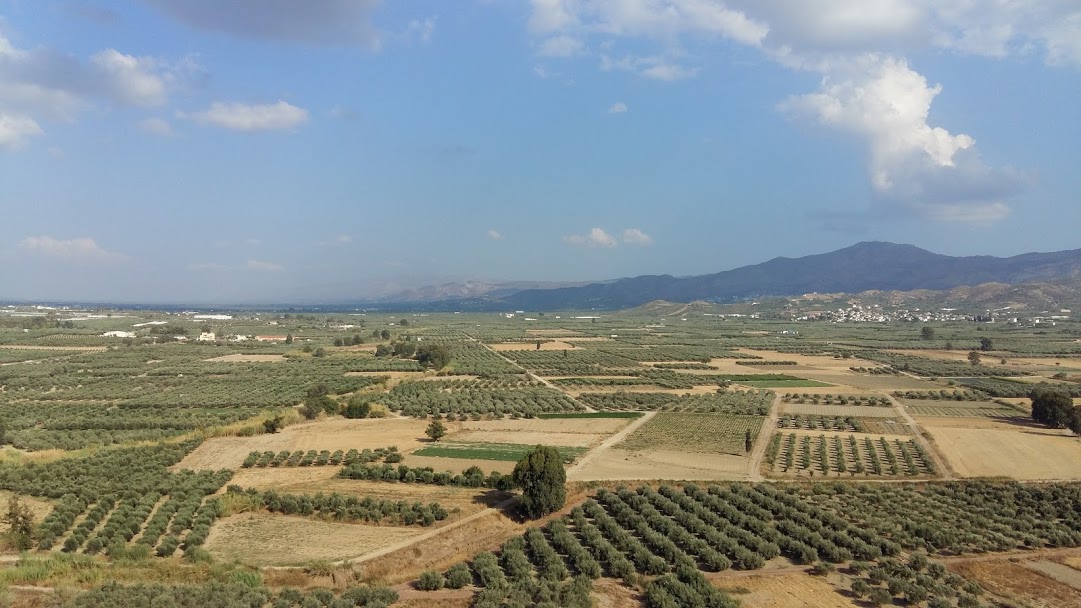
Phaistos was the second most important Minoan city after Knossos, and its history follows a similar timeline. It continued to be wealthy until the 2nd century BC, when it was destroyed by the nearby city of Gortyna.
The site is really well preserved. It makes you wonder whether there are some restorations which are not so obvious to the untrained eye!
How to get to Phaistos
There are frequent public buses from Heraklion to Phaistos in summer, and less frequent in winter. If you hire a car, it will take you about an hour and a half to drive from Heraklion to Phaistos.
For information on opening hours, visit the official website.
14. Archaeological site of Gortyna in Crete
Close to the site of Phaistos, you can visit the archaeological site of Gortyna. The first inhabitants arrived here around 3,000 BC.
The city became more prosperous from the late Minoan period onward. It was already wealthy during the 5th century BC, when the Gortyn Law Code was written. Gortyn reached its peak during the Roman era, and was destroyed by the Arabs much later, in 824 AD.
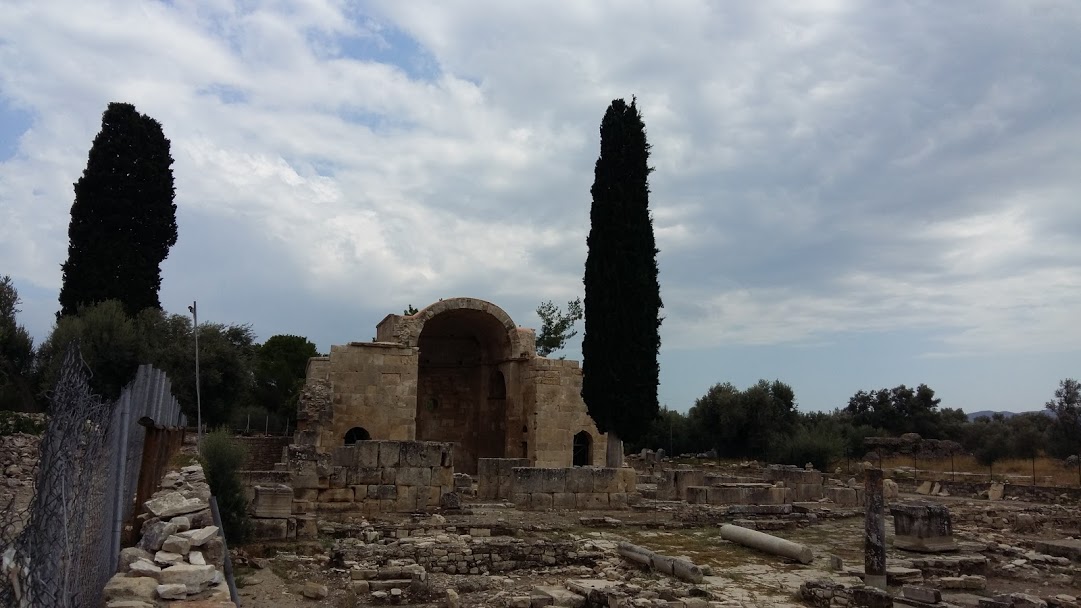
How to get to Gortyna
You can use the public buses to get from Heraklion to Ancient Gortyn. Or you can hire a car, and combine it with a visit to Phaistos and more places in Crete. Check the official website for more information.
15. Fortified islet of Spinalonga in Crete
The small island of Spinalonga is located to the east side of Crete, close to the popular Elounda, and just over an hour’s drive from Heraklion. You can visit the well preserved Venetian castle, that was built in 1579. This is the only site in this list that does not date from the ancient times.
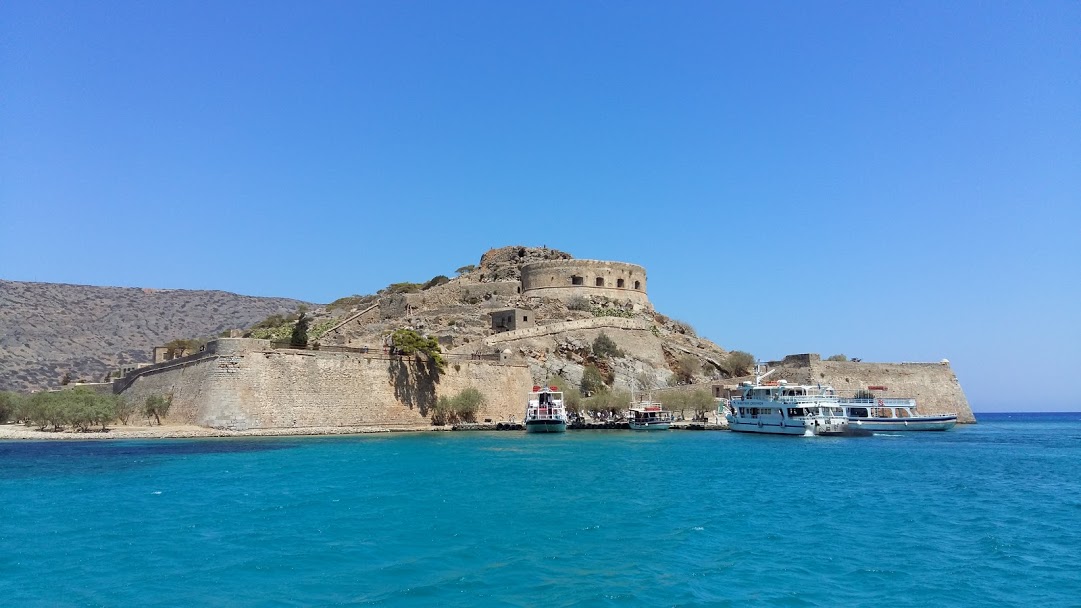
One of the main attractions of Spinalonga is its sad recent history. At the beginning of the 20th century, the island was chosen to be a place of exile for the lepers of Crete. Soon, lepers from all around Greece and abroad were forcibly quarantined here.
Initially, living conditions were very poor, but due to the efforts of some of the residents they gradually became better. The island was closed down in 1957, after the remedy for Hansen’s disease was discovered.
Victoria Hislop’s book “The island” describes life on Spinalonga, and a popular TV series has also been created. It’s worth reading the book or watching the series before you visit, as it will help bring the island to life.
How to visit Spinalonga
A fun and top-rated way to visit Spinalonga is this organized tour, which also includes a 4WD road trip and some olive oil tasting.
You can also visit Spinalonga independently. You will need to reach the small port of Plaka, just across the strait, from where you can hop on a small boat that will take you to the island.
Here is the official website, with all the information you need on Spinalonga.
More sites Crete
Many settlements, palaces, tombs and cemeteries have been discovered on the island. You will need several days, and a rental car, to visit them all. Who knows, you might even decide to return to Crete for another vacation!
Here are some more famous sites in Crete:
16. The UNESCO Archaeological Site of Aigai (Vergina)
The archaeological site of Aigai, or Vergina, is located in Northern Greece, in the region called Macedonia. The site is an important archaeological area, where the tombs of many kings of the ancient Kingdom of Macedon have been unearthed.
The on-site museum is perhaps the most atmospheric museum in Greece. It is a subterranean structure which was built around the royal tombs, in order to protect them. Visitors can see various objects used when the deceased were buried. Photography is not allowed inside this area.
In December 2022, the new museum of Aigai, which is a short drive away, also opened to the public. Here, visitors can see more artefacts discovered in the area of Vergina, including items of pottery, various tools, and intricate golden jewelry.
How to get to Vergina
Many people choose to visit the site in Vergina on an organized day trip from Thessaloniki. If you want to be more independent, and explore other sites in the area, you can always use a rental car. There are also public buses from Athens you can take.
Here is some more info: Archaeological Site of Aigai (Vergina) / Museum of the Royal Tombs
More ancient sites in Northern Greece
It’s fair to say that most tourists don’t have the chance to visit Northern Greece. Which is a shame, as there are numerous sites to visit. As you are moving towards the north, the landscape changes, and so do the sites, settlements and ancient civilizations.
The tombs of Vergina and the ancient sacred city of Dion are among the best examples of the Macedonian civilization. Combine that with the Roman and Byzantine monuments in Thessaloniki, and Northern Greece might become your new favourite Greek destination!
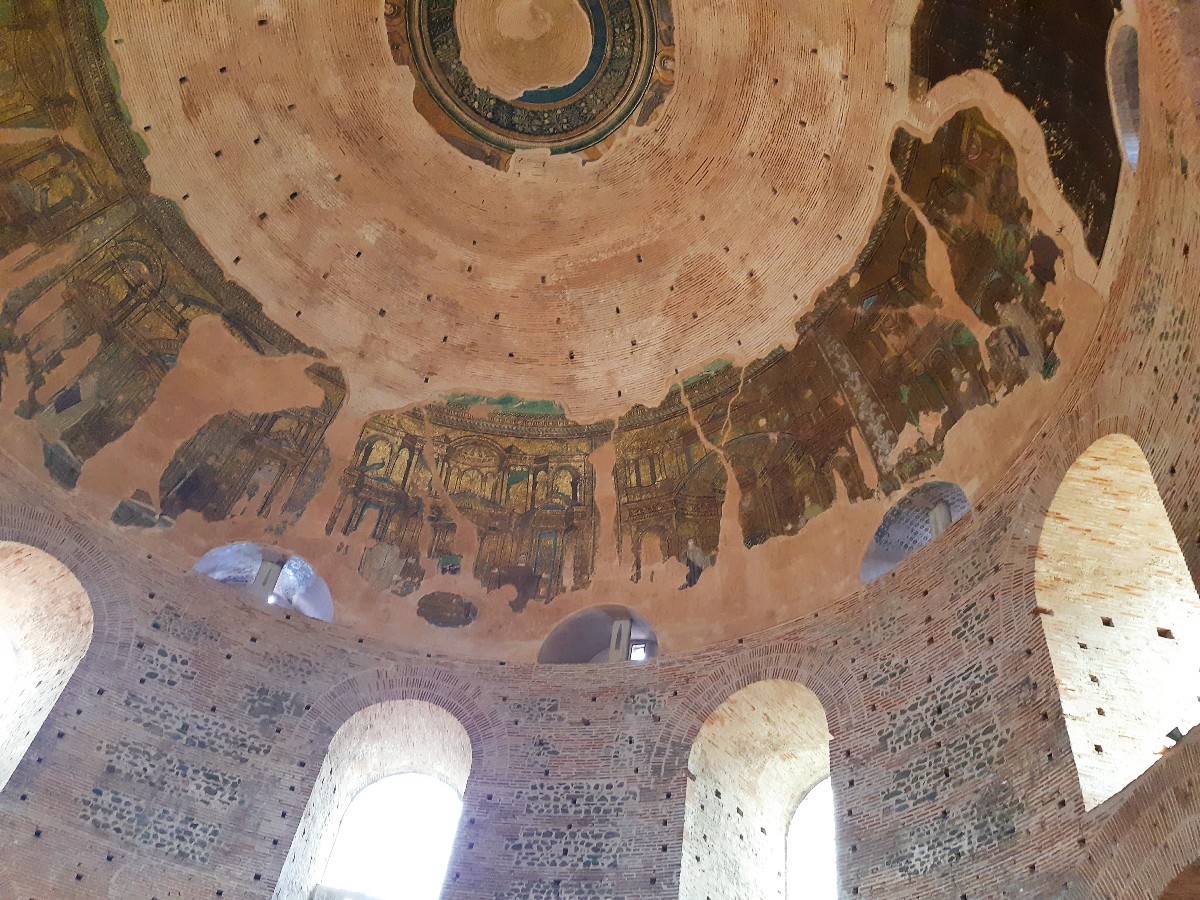
Here are a few of the monuments and sites in Northern Greece:
- The majestic Meteora Monasteries, a UNESCO World Heritage Site
- Ancient Pella
- Ancient Philippi
- The Paleochristian and Byzantine monuments in Thessaloniki, such as the Rotonda
- Ancient Dion
- Amphipolis
- Nekromanteion of Acheron
- Ancient Nikopolis
- Castle of Platamonas
- Cave of Petralona
Ticket prices and opening hours for the archaeological sites in Greece
Most people visit Greece during the summer season, from April to October. Summer opening hours for the top archaeological sites in Greece are typically 8:00-20:00. The smaller sites have shorter opening hours, usually around 8:30-15:30, but this may vary from one year to the next.
Winter stretches over the off-peak months, November to March. During that period, the majority of the ancient sites open around 8:30 and close somewhere between 15:30 and 17:00. Some of the minor sites may be entirely closed in winter. This includes the site of Ancient Delos.
The best place to look for updated information for each site that you want to visit is the official Ministry of Culture Website. Here you can also find out more about entry ticket prices, free entrance days, closures on public holidays and any discounts. Despite the dated appearance, it’s updated regularly.
Also, take a look at this article with Greek celebrations and national holidays. On some of those days, ancient sites are closed, but on others they offer free entrance. Here are all the days of free entrance for the sites in Greece.
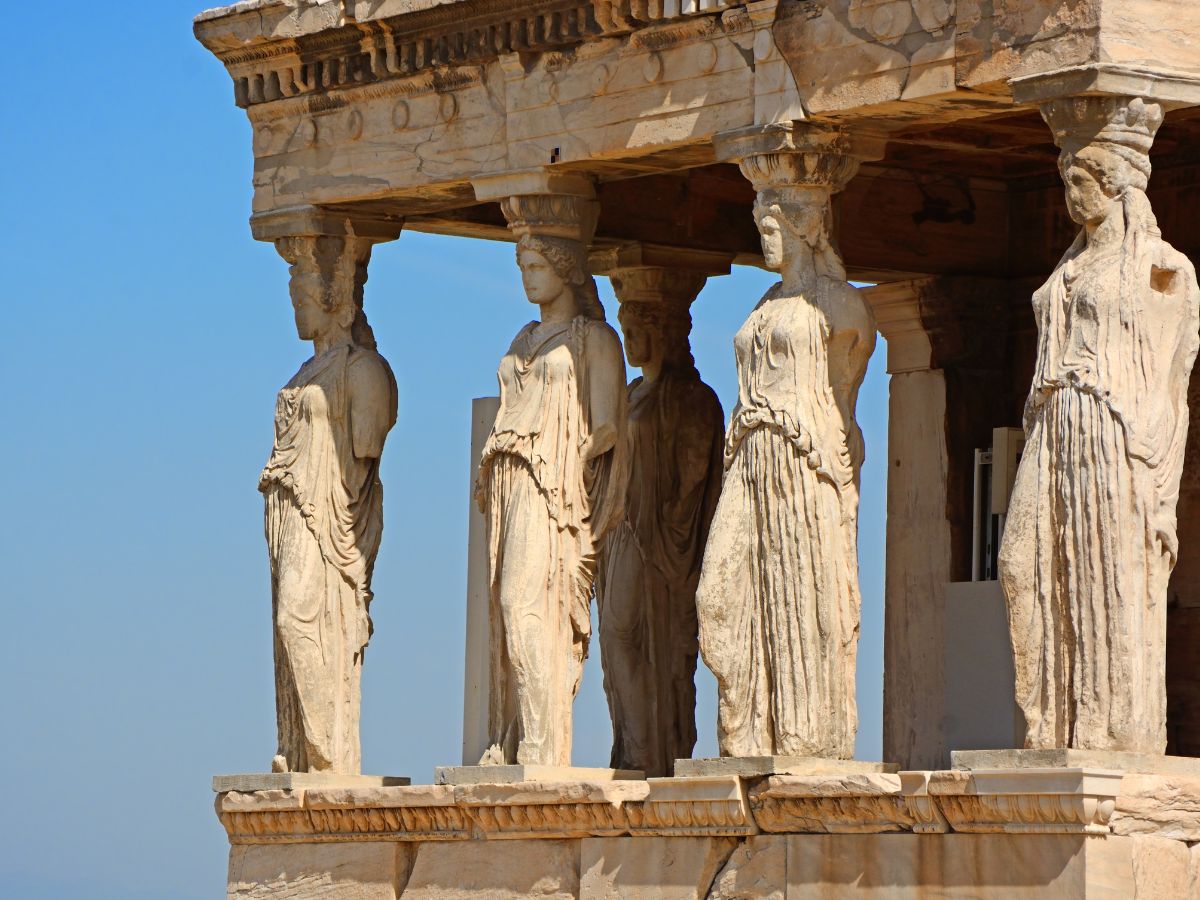
A few tips for visiting the ancient sites in Greece
Before you set off to explore the ancient sites in Greece, here are a few tips:
- Wear comfortable, non-slippery walking shoes – I cannot stress this enough! Reaching most of the sites involves climbing a lot of stairs, or climbing on hilly and uneven terrain. Personally, I think Teva sandals are the best shoes for Greece.
- Bring loose, comfortable clothes suitable for the season. If you are visiting in summer, carry a light jacket as well, as some of the on-site museums may have a low temperature. Here’s my guide on what to pack for Greece for every season.
- If you are visiting in summer, avoid the warmest hours of the day (11:00-17:00). Make sure you have sunscreen, sunglasses, a hat, and plenty of water with you.
- Buy your tickets in advance, especially for the popular sites like the Acropolis, Knossos, Lindos, Delos, or Delphi. Or even better, get a guided tour!
- If you decide to drive, have a look at this article about driving in Greece.
FAQs about ancient sites in Greece
People visiting Greece often ask questions like these:
What are the best ruins in Greece?
Some of the best ancient sites in Greece include the Acropolis of Athens, Ancient Delphi, the theater of Epidaurus, Ancient Olympia, Mycenae, the Palace of Knossos, and Ancient Delos.
Which Greek island has most ruins?
Crete, which is the largest island in Greece, has the most ruins. You can visit Knossos, Phaistos, Gortyna, Aptera, Zakros, Malia, and many more.
Where in Greece has the best history?
Some of the best places in Greece for history include Athens, Crete, the Peloponnese, the Cyclades and Northern Greece. In fact, everywhere in Greece is full of history!
How many archaeological sites are in Greece?
There are well over 500 ancient and historical sites scattered all around Greece.
Is Acropolis and Parthenon the same thing?
No, the Acropolis and the Parthenon are not the same thing. The Acropolis is a whole ancient citadel, located on a hill in Athens. The Parthenon is a majestic temple built at the top of the Acropolis, to honor the Greek goddess Athena.
Since you are here, have a look at this article with a few useful words and phrases in Greek.
 Hi! I’m Vanessa from Athens. If you’ve been to any of these ancient sites in Greece, I’d love to know which one(s) you liked the most. Some of my own favourites include the Ancient Agora of Athens, Delphi, Delos, Epidaurus and Phaistos. Follow me on my social media:
Hi! I’m Vanessa from Athens. If you’ve been to any of these ancient sites in Greece, I’d love to know which one(s) you liked the most. Some of my own favourites include the Ancient Agora of Athens, Delphi, Delos, Epidaurus and Phaistos. Follow me on my social media:
- Facebook page and very active Facebook group
- Amazon
